19 Martyrs pictures below.
and more detail in post TUESDAY, 19 MAY 2009
REVIEW
Christian Martyrs for a Muslim People
by Martin McGee

At the anniversary of the Seven Atlas Martyrs I was fortunate to catch up with the “forthcoming” book of Martin McGee. At weekend it was a joy to read it from cover to cover. The space for an Amazon review has the stamp of brevity but it does note the importance of the significance of Mgr. Henri Teissier. The
Archbishop’s teaching on inter-faith recently adds strength from a surprising source.
The headlines in June 2009 were, “Obama reaches out to Muslim world”, “President Obama calls for greater inter-faith harmony”. The now famous address in Cairo must warm the heart of Teissier. Obama emphasized that “the people of the world can live together in peace. We know that is God's vision. Now, that must be our work here on Earth.” He made revisions to the speech up until the last minute.
Martin’s book does not carry a sub-title of “19 Martyrs of Algeria”. Its unambiguous title is, “Christian Martyrs for a Muslim People”, and has a much wider range of the Christian-Muslim relations of closer mutual respect, service, friendship, and prayer.
In April 2005 Martin first visited Algeria following a strange attraction and love for the people of Algeria. This book is not some mere travelogue. After his first visit, he described his experience to Mgr Henri Teissier, Archbishop of Algiers, as the la plus belle semaine de ma vie - the best week of my life. Several visits followed and he wrote articles which now feature in this volume.
"The Algerian Church (167).
The key and most powerful influence is that of Mgr Henri Teissier. Much of the significance of this book is essentially the instillation of the thought, comprehension, and spirit of the Archbishop of Algiers, later retired. Between the lines, and more specifically in the Addresses of Mgr Teissier (Appendices), the reader grapples with the vision and the rare insight of this dedication of ‘Christian Martyrs for a Muslim People’. The incisive conclusion to the address, given by Mgrr. Teissier in Italian to a missionary Congress held in Brescia, Italy on May 17, 1997. (155-167), is but a window to his writing).
A hundred years ago the emigration of a European people and of a European population to the south of the Mediterranean brought about the birth of a Church in Algeria. But this Church was, in fact, concerned above all by pastoral work with Christians of European origin. That is why in 1868, when Cardinal Lavigerie founded the White Fathers and the White Sisters, he forbade them to make contact with the European parishes. He sent them into the country regions and to the Muslim districts. Finally, at the end of the colonial period and more particularly with the major crisis in society, all the inhabitants of European origin left. There only remained a few people with a strong evangelical motivation. They are not here to establish a Church in Algeria, but to be the Algerian Church, the Church of Algeria, the Church of a Muslim people. Before the assassinations, the addresses of Archbishop Henri and the talks of Prior Christian of Tibhirine, were purified in the crucible of threat, persecution and long suffering and united in mind and heart and soul."
The blood bath of Algeria1994-96 abated. The current situation of January 2007 is summed up, “The number of active Islamic guerrilla fighters is thought to be approximately eight hundred to one thousand, down from a high of 25,000 at the height of the civil war in the mid-1990s. In January 2007, the GSPC changed its name to the Al-Queda Organization in the Islamic Magreb.” (19).
I take from the 19 brief biographies two vignettes of the brutal terrorism on the people, - the assassinations of four of the White Fathers, Dec 27, 1994, and the assassinations of two of the Sisters of Our Lady of the Apostles, Sept 3. 1995, are examples.
The targets of the four White Fathers died in the multiple motivation. It is possible that the fundamentalists were hoping to kidnap the four priests as a reprisal for the killing of four Islamists who had hijacked an Air France plane at Algiers airport a few days earlier on December 24.(59). The reaction this time was a mass response to the killing terrorists.
The White Fathers of Tizi-Ouzou.
“An elderly White father said after the funeral of his assassinated brothers, “I turned towards the Father, giving thanks during the burial of my brothers, the four victims of Tizi-Ouzou. I recall the closed shops along the route of the funeral cortege, and the silent crowd who joined it as far as the cemetery. Imagine ... four Christian missionaries led to their resting place by a crowd of [about 4,000] Muslims; and even more, on entering the cemetery, this crowd emitting youyous and applauding as if for their own martyrs.
Msgr. Teissier, present to the concourse of sympathetic Muslims, was able to find the words which expressed fully the meaning of this demonstration by affirming: "The Mission of the Church is to find and raise up brothers." That's exactly, it seems to me, what this gathering expressed, a witness to a love which had been recognized and shared. This moment will remain the summit of my missionary life, a luminous memory until the end of my existence.” (58).
Sisters Angele-Marie and Bibiane.
The Sisters, on their quiet walk from the Eucharist, were slain beyond any humanity. As they lay in the street dying gunned down no one dared to go to their aid. That is the depth of terror by which people were reduced by the Islamic extremism.
Fear Reigned (Pere Lafitte). “At the time of the killing of the Sisters, Islamic violence was at its height and fear reigned … Despite the fact that the Sisters were universally loved and admired in Belcourt, people were too frightened to show their support after their deaths. Pere Lafitte had to move their belongings with only the help of two religious, one of them elderly. There was only one elderly woman from the area who had the courage to help them. At their funeral there weren't even ten Algerians. Everyone was terrified of the consequences of being seen to oppose the Islamists. . ."You had to leave people to die”. (53-54)
(As I recall the occasion, in October 1996, at the Cistercian General Chapter at Tre Fontane, Rome, Henri Teissier preached the Homily in the remembrance of the Seven Atlas Martyrs. Among introductory comments he said, “I think there is no other monastery in the world which has such a general relationship with the members of the local Church. In this very small Church all had a personal bond with the monastery”).
The venture of Martin McGee in “unexpected places” gives us, in thought, access to the places of Muslim life. “At the very least my short visits to North Africa have given me the ability to see Muslims as fellow believers and as brothers and sisters made in the image and likeness of the one God. A monastic vocation can lead you to the most unexpected places!”
In September 2008 a new publication brings to English readers fuller information and deeper insight in the book, “Christian Martyrs for a Muslim People” by Martin McGee OSB. Books about the assassinations are mostly from the Francophone writers. Martin McGee, in spite of the forbidding aspect, has been attracted in a special way to Algeria and his various trips lead him to a deeper love of the people in Algeria.








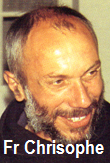
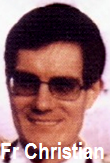




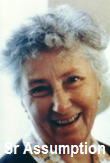

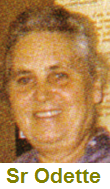
Response: REVIEW Christian Muslim
Dear Donald,
That is such an important piece of writing at this time. I love the honour paid to the Atlas Community.
It is a most fascinating, and essential, step towards the "wider range of the Christian-Muslim relations of closer mutual respect, service, friendship, and prayer". How greatly Fr. Christian and his Brothers would welcome this publication, and these new initiatives, which extend the mission of their lives. . . . William.
Date: Sunday, June 14, 2009, 8:11 AM
Dear Donald,
I have enjoyed reading the Article you posted: Christian Martyrs for a Muslim people. Thank you. . . .invited me to visit Nunraw, so maybe in the next few weeks I will get to read the book upon which the article is based. . . .Peter
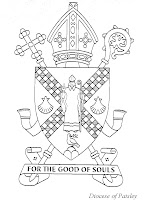 grace to it , not even the angels, nor the Mother of God herself, blessed throughout all ages.", are so obvious but, at the same time, I am surprised by illumination in this basic of faith.
grace to it , not even the angels, nor the Mother of God herself, blessed throughout all ages.", are so obvious but, at the same time, I am surprised by illumination in this basic of faith.














